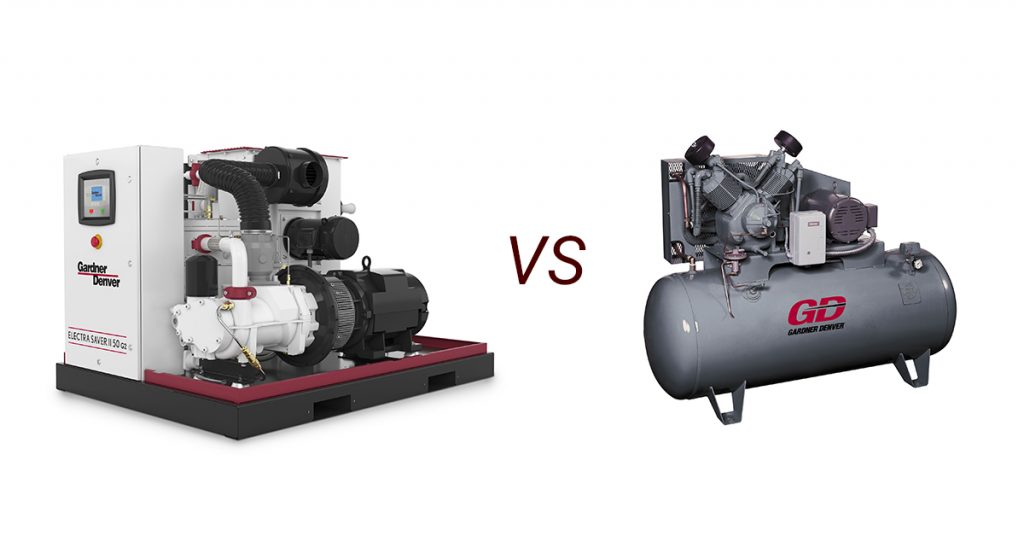
When deciding on the right air compressor for your business, it’s important to distinguish between the two main types available: the rotary screw compressor and the reciprocating/piston compressor. The first notable difference is in their operation. Rotary compressors have two screws that turn in opposite directions, trapping the air between them causing compression. Reciprocating compressors use pistons that move up and down to compress the air inside the cylinder. Although most companies have relied on the uses of reciprocating air compressors and the traditional piston model, comparing the maintenance costs, required application and individual features of both types can help you determine what’s best to help your productivity and bottom line.
Compressor Maintenance
One of the advantages of the rotary screw compressor over the reciprocating compressor is the reduced maintenance requirements and costs. Rotary compressors generally require simple filter and lubricant upkeep. Reciprocating air compressors have multiple parts that require frequent checks such as valves and piston rings. As these parts wear over time, the compressors generate more heat and without a consistently high level of maintenance, can gradually lose performance value.
Compressed Air Applications
When comparing compressor types, it’s important to consider what you will be using it for. A clear advantage of reciprocating air compressors over rotary screw compressors is their ability to work at higher levels. They perform better for jobs requiring pressures above 150 psi. Because of this flexibility of use in demanding applications, they are used in a variety of industries. Additionally, they can be base mounted or mounted directly onto tanks. To determine your air compressor output at different pressures, use Lewis Systems’ CFM calculator.
Rotary Screw Air Compressors are best suited to run at pressures under 150 psi. This makes them ideal for standard plant industry applications. They are dependable and have long lifecycles, making them a more cost effective option for many medical and industrial facilities. And like reciprocating compressors, they can run on either gas or electricity.
Features
In addition to the varying maintenance costs and distinctive differences of functional application, there are additional features of each compressor type to consider.
Rotary screw compressor features:
Optional designs and enclosures to reduce noise levels
More energy efficient
Generates less heat
Functional in extreme temperatures
Safe and relatively small in size
Continuous operation with no pistons to rest for cooling
Reciprocating compressor features:
Produces both high power and high pressure
No oil carryover
Greater compression range
Better for intermittent operation
Most commonly used compressor
Lower initial set-up cost
There are a lot of complex factors that go into choosing the right compressor for your application. To learn more about which type of air compressor is best for your business, contact a specialist at Lewis Systems. We stay aware of the latest technological advancements and seek out the most energy efficient and economically viable solutions for our customers. We also service a wide variety of compressed air systems and equipment from reliable companies such as Gardner Denver and Becker. Contact us today for more information.
For more updates on the latest air compressor tips and trends, follow us on LinkedIn.


